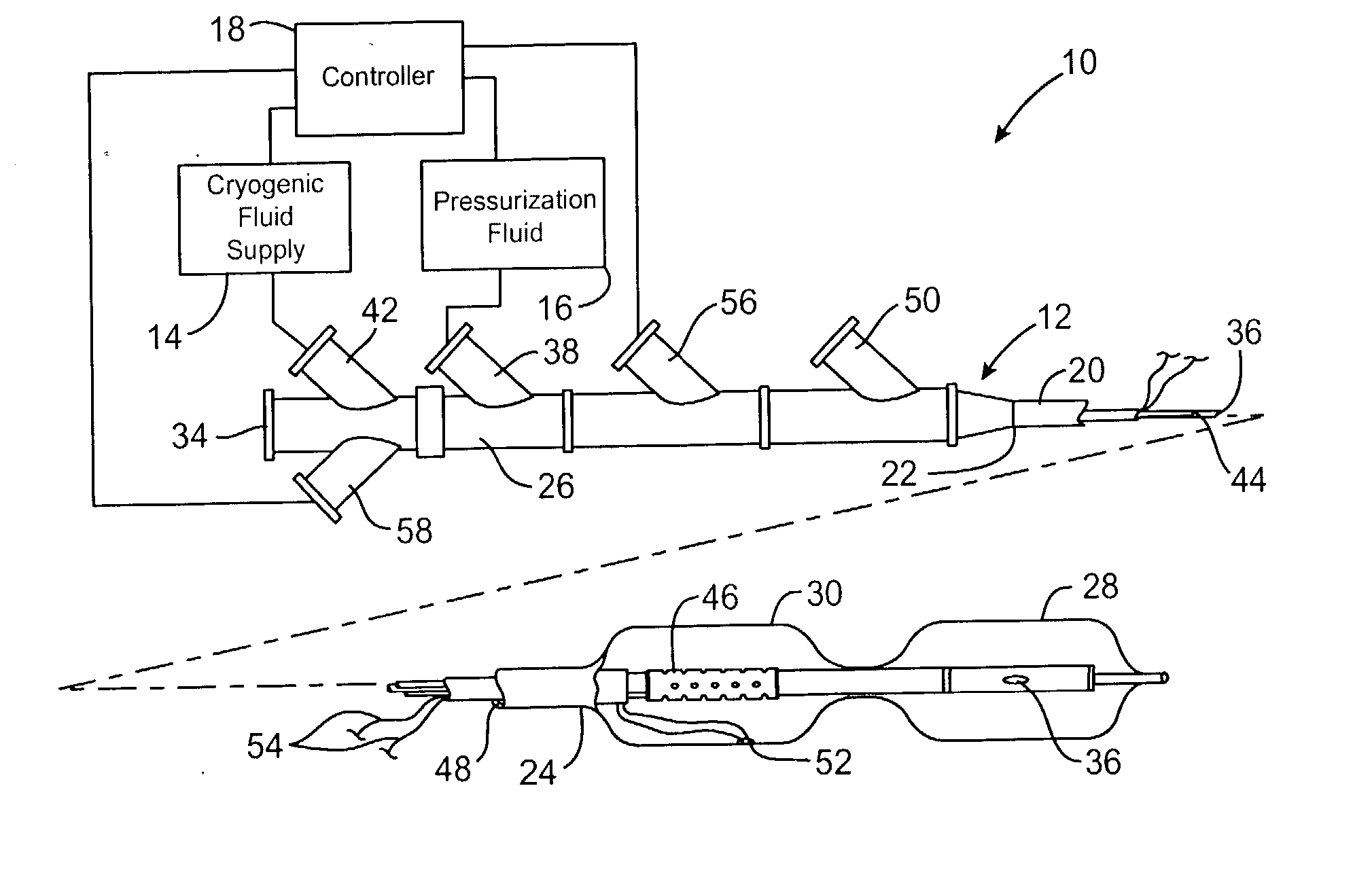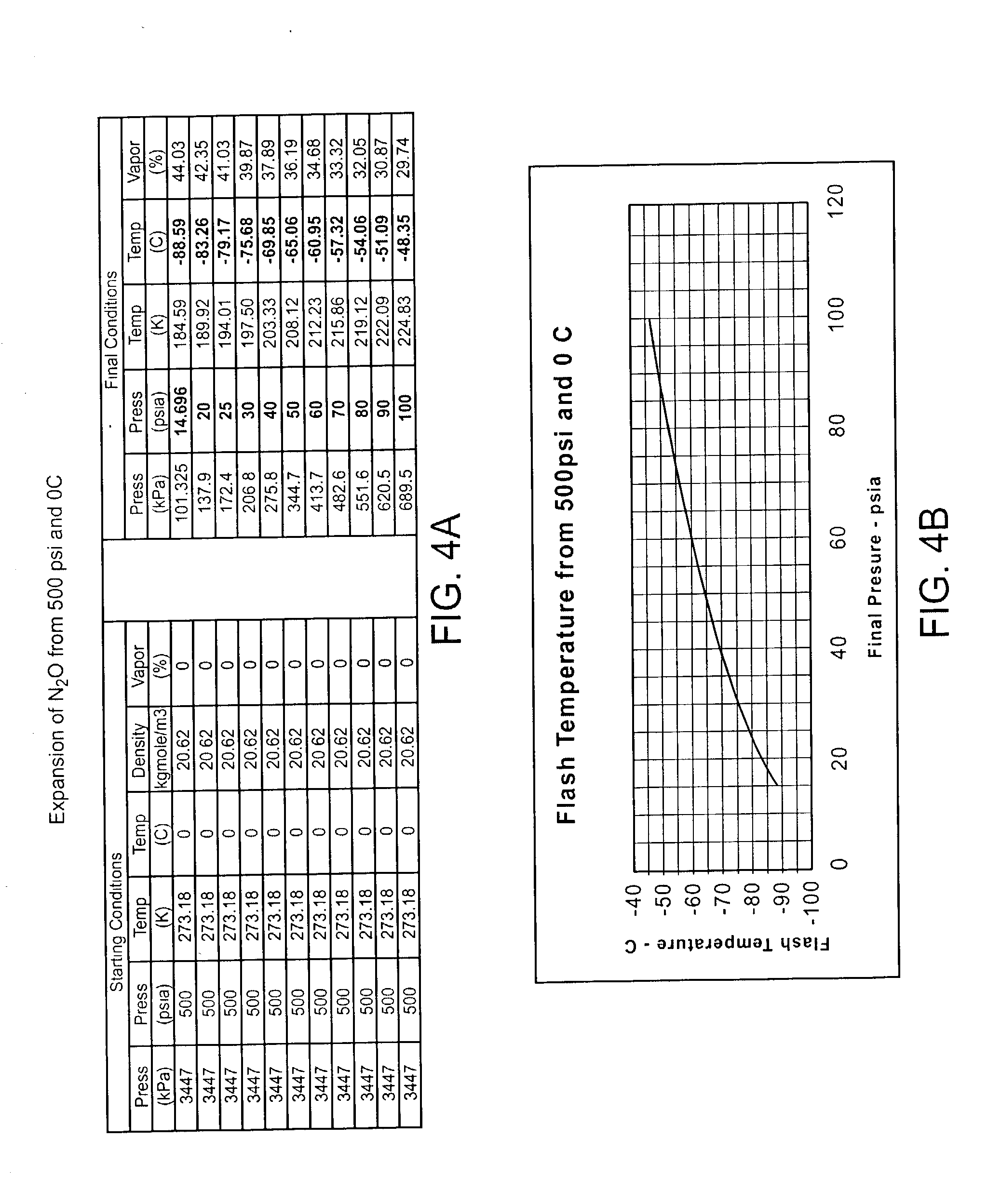Cryogenically enhanced intravascular interventions
- Summary
- Abstract
- Description
- Claims
- Application Information
AI Technical Summary
Benefits of technology
Problems solved by technology
Method used
Image
Examples
Embodiment Construction
[0028] The devices, systems, and methods of the present invention are related to those of co-pending U.S. patent application Ser. No. 09 / 203,011, filed on Dec. 1, 1998 for an Apparatus and Method for Cryogenic Inhibition of Hyperplasia. That application is assigned to the present assignee, and its full disclosure is incorporated herein by reference.
[0029] Referring now to FIG. 1, an exemplary system 10 is capable of treating a diseased vessel wall of a blood vessel using a combination of both angioplasty dilation and cryogenic cooling. In general, system 10 includes a catheter 12 coupled to a cryogenic fluid supply system 14 and an angioplasty pressurization system 16. One or both of cryogenic system 14 and pressurization system 16 may be operatively coupled to a controller 18 for coordination of cooling and dilation, as will be described in more detail hereinbelow.
[0030] Catheter 12 generally includes a catheter body 20 having a proximal end 22 and a distal end 24. A proximal housi...
PUM
 Login to View More
Login to View More Abstract
Description
Claims
Application Information
 Login to View More
Login to View More - R&D
- Intellectual Property
- Life Sciences
- Materials
- Tech Scout
- Unparalleled Data Quality
- Higher Quality Content
- 60% Fewer Hallucinations
Browse by: Latest US Patents, China's latest patents, Technical Efficacy Thesaurus, Application Domain, Technology Topic, Popular Technical Reports.
© 2025 PatSnap. All rights reserved.Legal|Privacy policy|Modern Slavery Act Transparency Statement|Sitemap|About US| Contact US: help@patsnap.com



